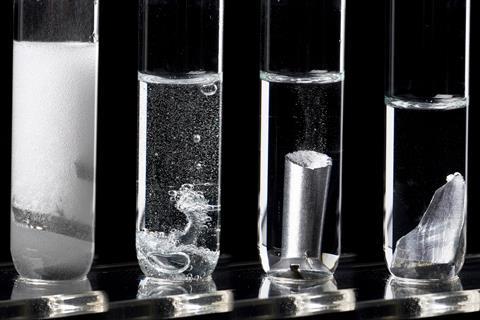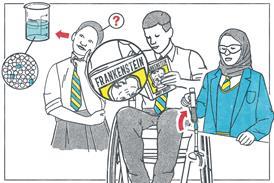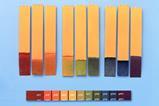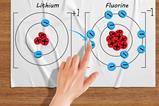Use these 5 teacher-tested ideas to help students understand the importance of metal extraction in the modern world
Extraction of metals has been a stalwart of the chemistry curriculum for many years and gives context for the study of metal reactivity at 14–16 (rsc.li/4cLb4JD). More recently, this topic has become less relevant to students in the UK and Ireland. The last aluminium smelter in the UK, at Anglesey Aluminium in Wales, closed in 2013. And although two blast furnaces remain in Scunthorpe and on Teesside, British Steel plan to decommission these over the next few years. Today, there is greater emphasis on recycling metals, so extraction from ores seems like old technology.

Extraction of metals has been a stalwart of the chemistry curriculum for many years and gives context for the study of metal reactivity. More recently, this topic has become less relevant to students in the UK and Ireland. The last aluminium smelter in the UK, at Anglesey Aluminium in Wales, closed in 2013. And although two blast furnaces remain in Scunthorpe and on Teesside, British Steel plan to decommission these over the next few years. Today, there is greater emphasis on recycling metals, so extraction from ores seems like old technology.
Despite the shift in UK industry, metal extraction still occurs worldwide often in countries with less stringent health and safety laws and lower standards of environmental monitoring. The move to mass electrification of processes previously carried out by combustion processes has increased global demand for metals.
Check that your curriculum sequencing allows students to access the key knowledge
1. Provide clear context
Be clear that metal extraction is a context. All metal extractions are reduction processes and the choice of process depends on the reactivity of the metal. Use these tips to teach redox reactions (rsc.li/3Ay1Ymi).
Be clear that metal extraction is a context. All metal extractions are reduction processes and the choice of process depends on the reactivity of the metal.
Specifications place the extraction of iron, copper and aluminium as a context for the study of metal reactivity. It’s no longer the memory exercise it used to be and students do not need to ‘learn the blast furnace’. Emphasise to students that there’s actually very little they have to learn by heart and it is much more important to understand how metal extraction relates to the reactivity series.
2. Identify key knowledge
Check that your curriculum sequencing allows students to access the key knowledge. You can incorporate the key knowledge in metal extraction into other topics, for example in units on using resources sustainably. Display the ’Earth’s resources’ poster and download the accompanying scaffolded activity for 11–14 learners (rsc.li/3T9AMR4).
Check that your curriculum sequencing allows students to access the key knowledge. You can incorporate the key knowledge in metal extraction into other topics, for example in units on using Earth’s resources sustainably.
Many schools move metal extraction to fit their own schemes, which may disconnect it from background concepts needed for understanding. If students find it difficult to apply their knowledge successfully, check whether the prerequisite knowledge is in place.
3. Scaffold learning
Start with scaffolds and then reduce them (for example, structure strips: rsc.li/471ZHfn). Students aren’t usually provided with a copy of the reactivity series for exams and this can be a source of stress. Give students a copy of the series and other prompts depending on the needs of the class as they tackle some questions. Review the answers and slowly remove the support to help students realise they don’t need it and can answer questions confidently alone. This approach works best when it is the focus of a single lesson.
Start with scaffolds, such as structure strips, and then reduce them. Students aren’t usually provided with a copy of the reactivity series for exams and this can be a source of stress. Give students a copy of the series and other prompts depending on the needs of the class as they tackle some questions. Review the answers and slowly remove the support to help students realise they don’t need it and can answer questions confidently alone. This approach works best when it is the focus of a single lesson.
4. Show real-world examples
Show students images and videos of metal extraction processes. In our post-industrial economy, fewer students have any idea about the scale of industrial processes. Although we no longer produce metals industrially in the UK, we still rely on other countries to do so.
Help students connect the topic of metal extraction with how we use metals in real life
Showing old videos of metal extraction can open students’ eyes to the ethics of outsourcing our most polluting industrial processes to other countries. Although we do not see the immediate problems from mining and extracting metals in the UK, there are global effects that we can mitigate with mass individual action. This explains the importance of reusing and recycling items.
5. Keep it relevant
Help students connect the topic of metal extraction with how we use metals in real life. Identify the metals in the devices they rely on. Modern electronics depend on a variety of metals from all areas of the periodic table and relatively few are found in elemental form in the Earth’s crust.
Lithium is a reactive metal used in rechargeable batteries that power our mobile phones, tablets and e-scooters. Students should be able to predict from their core knowledge that we need extraction to do this and electrolysis is likely used.
Kristy Turner














No comments yet